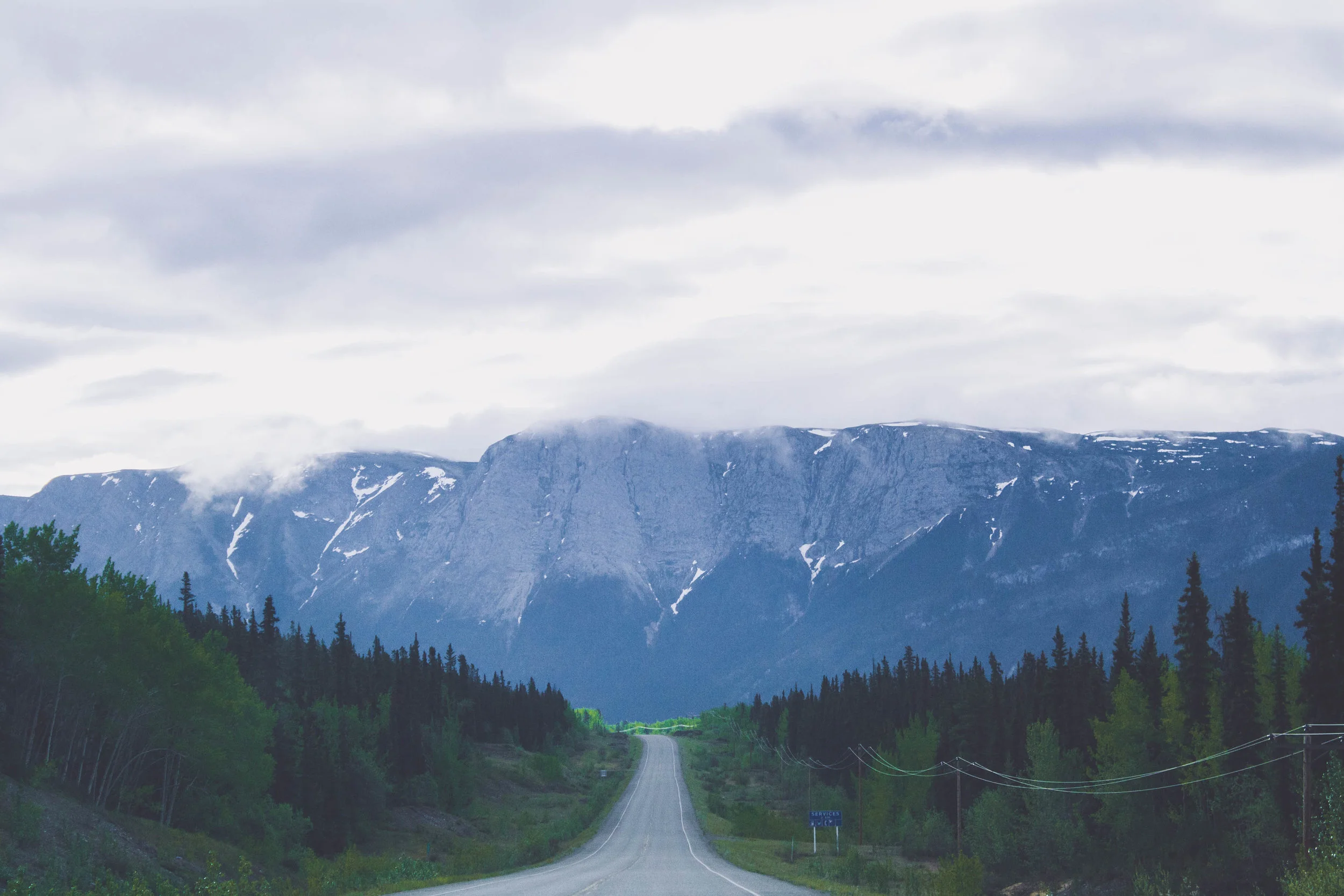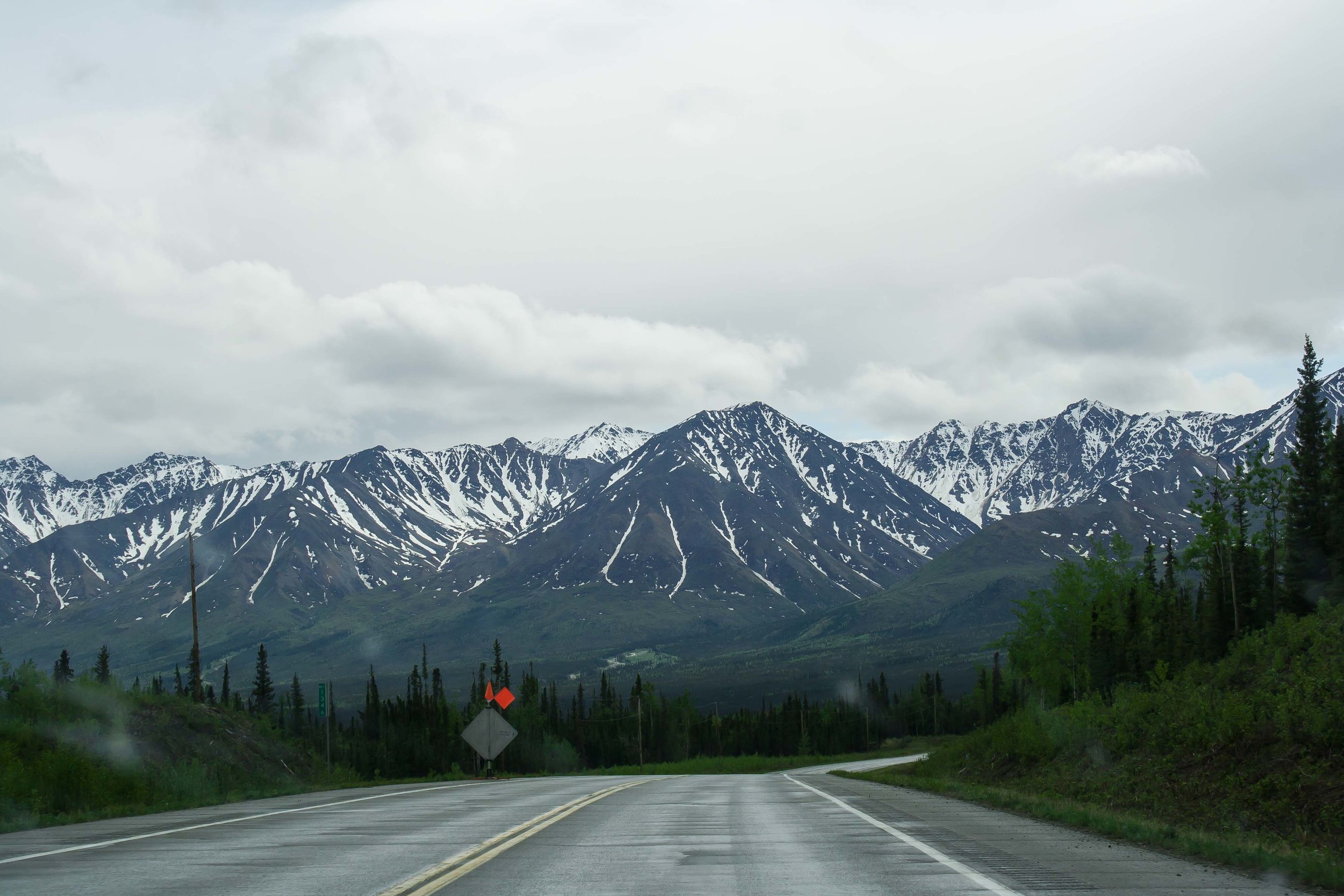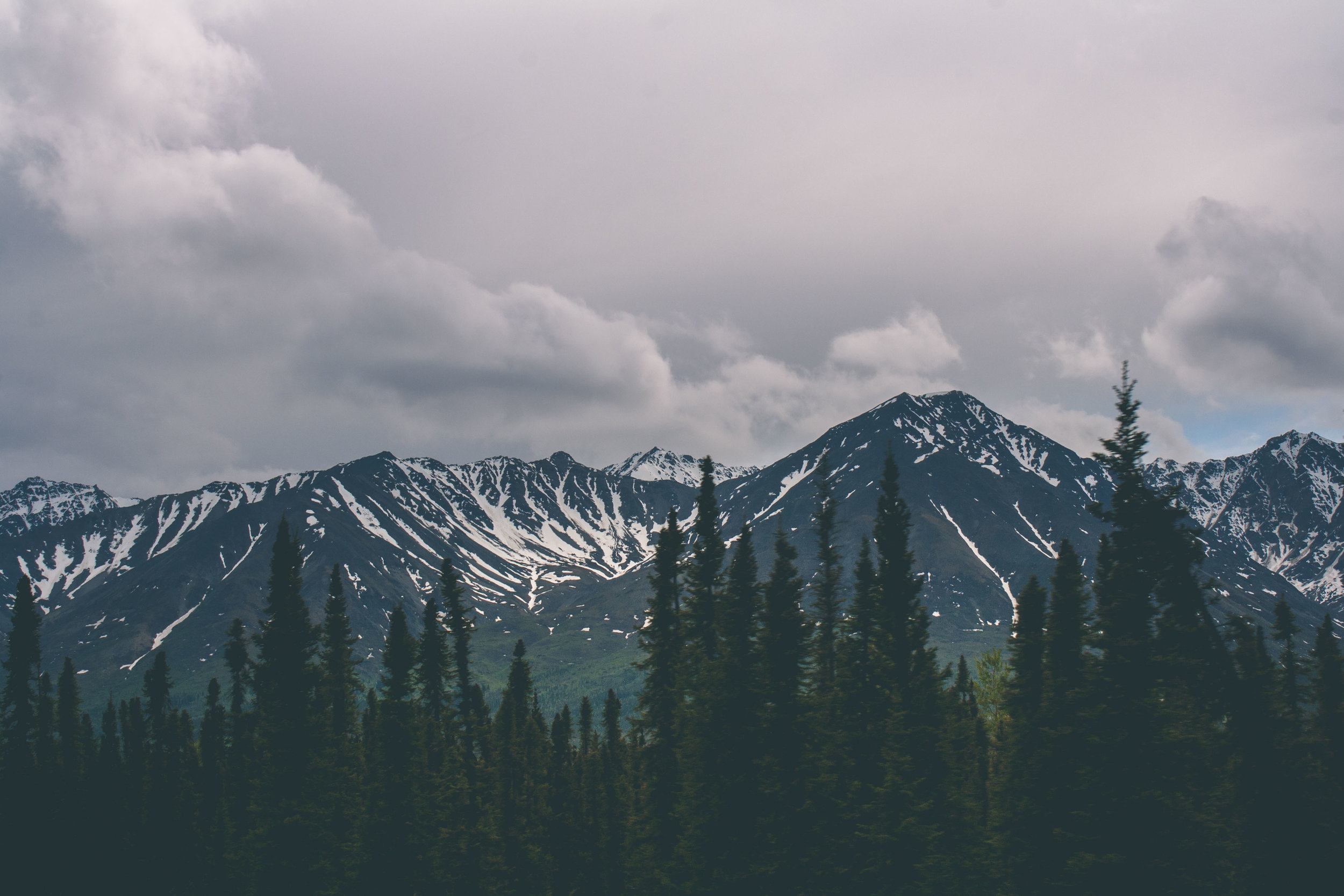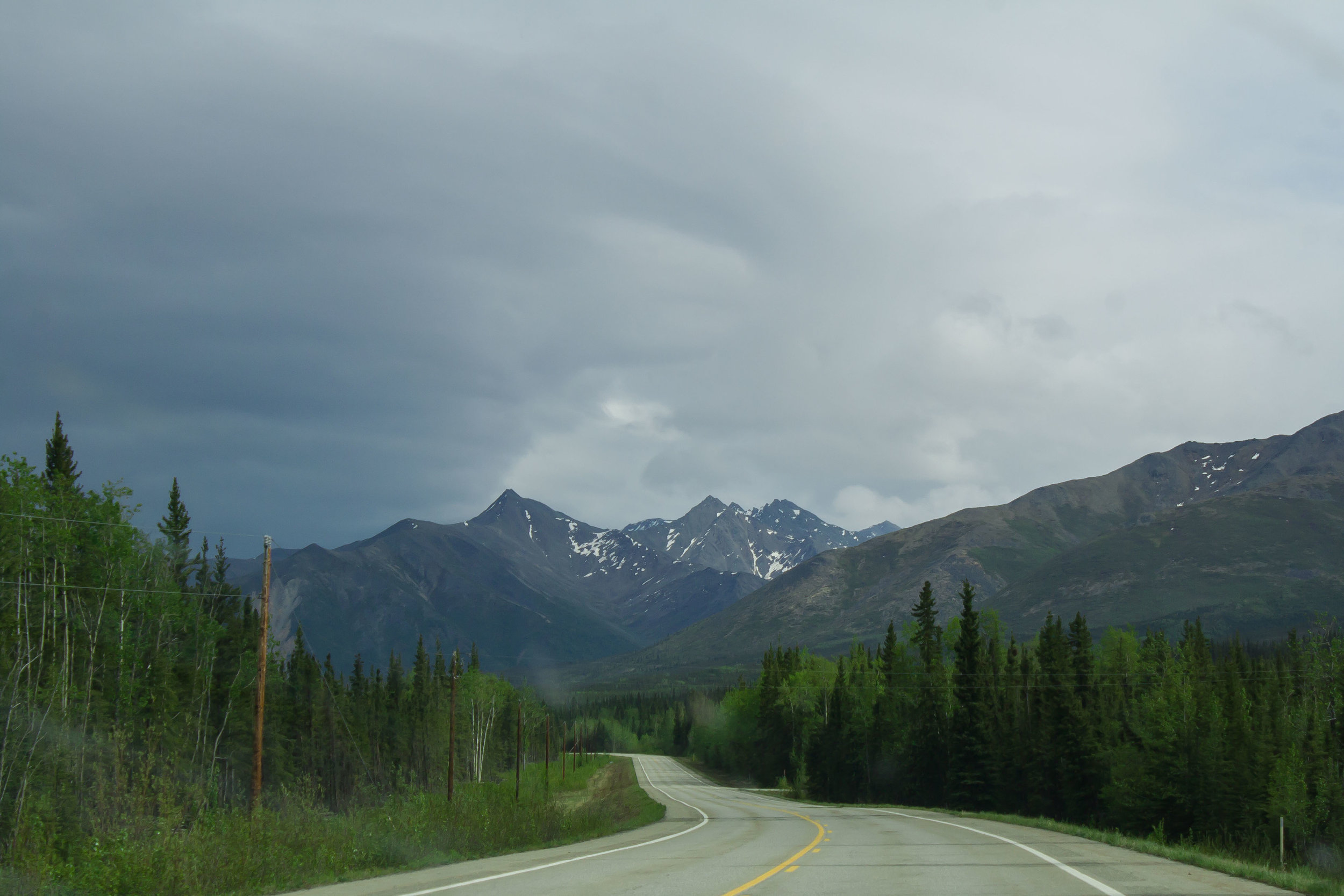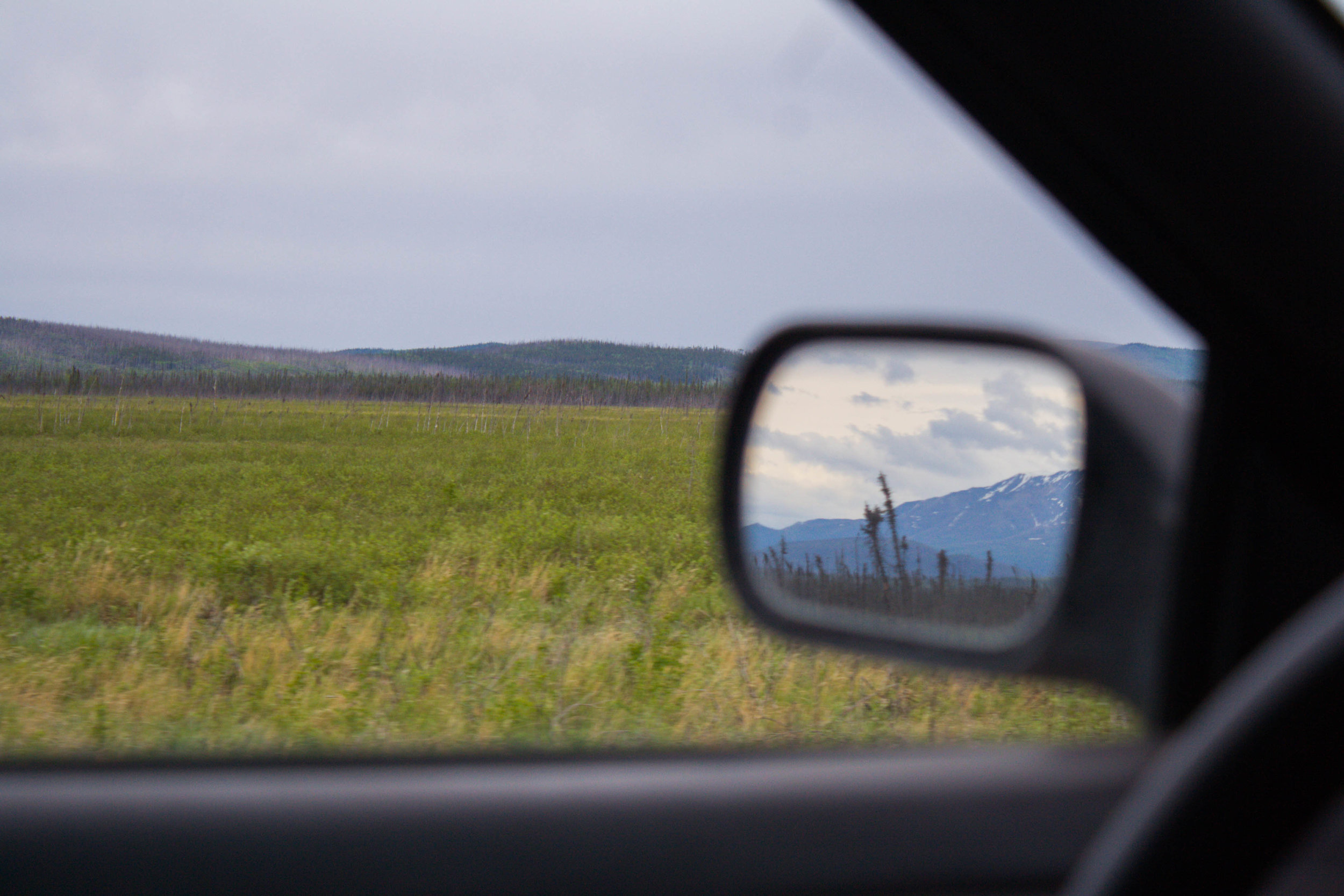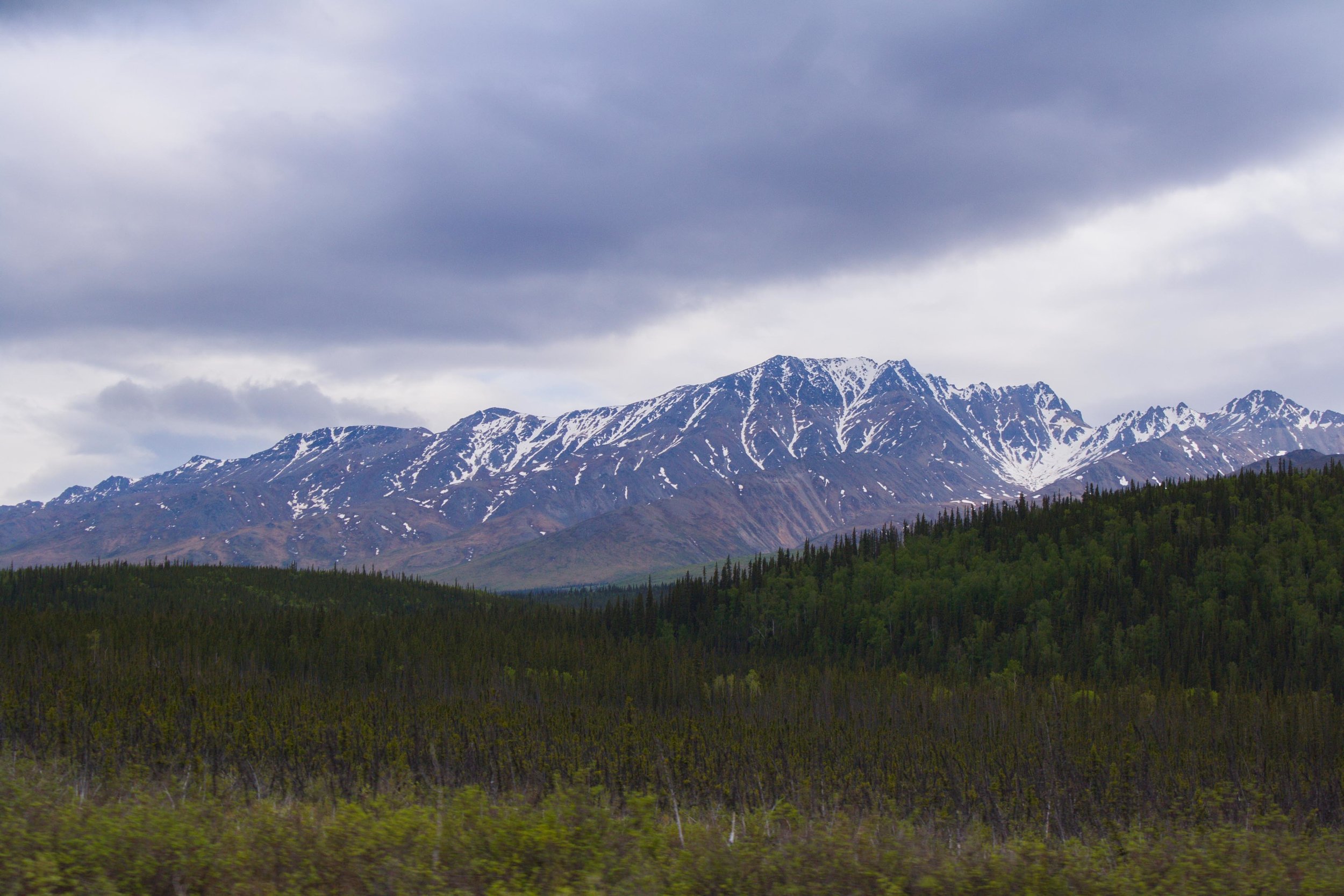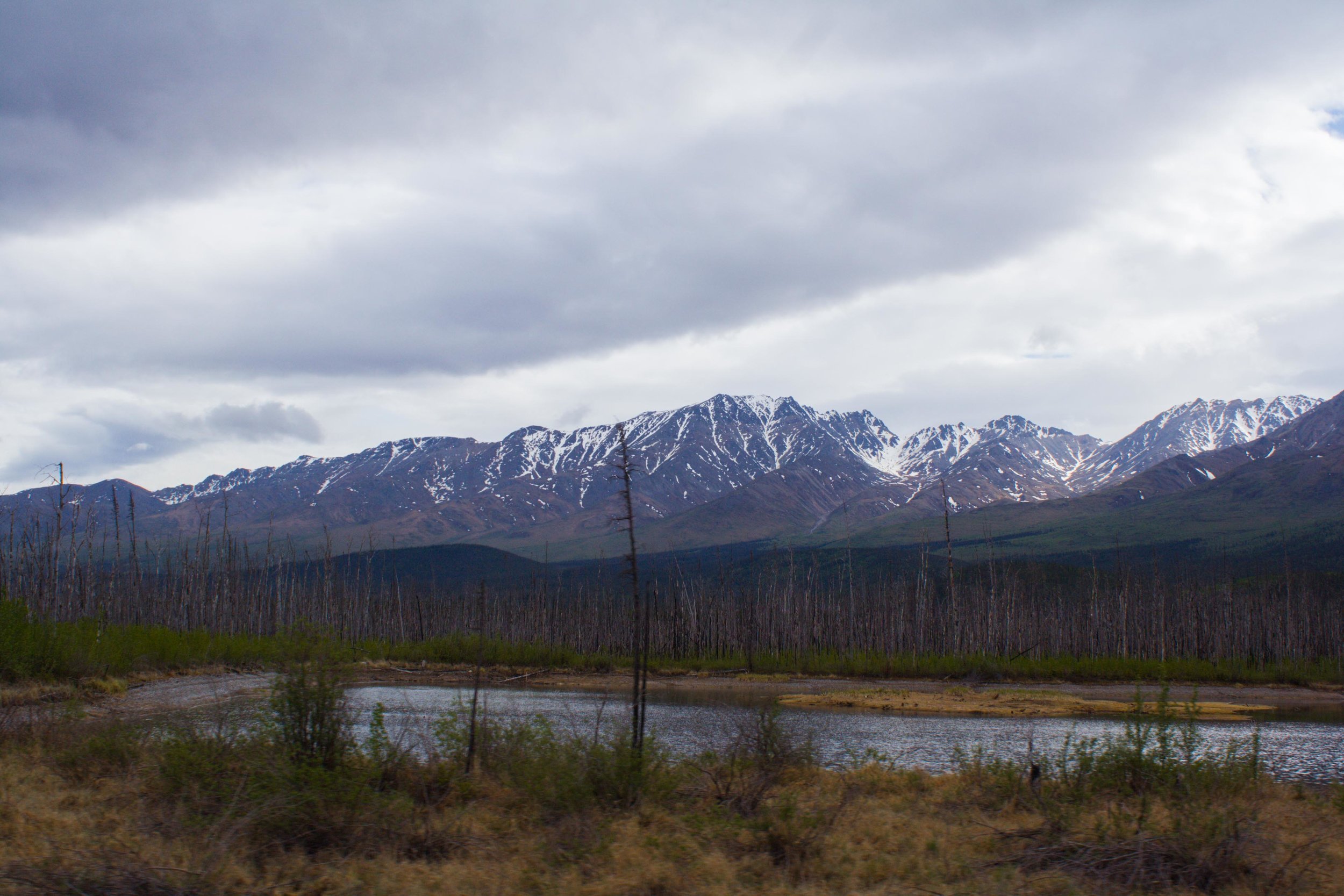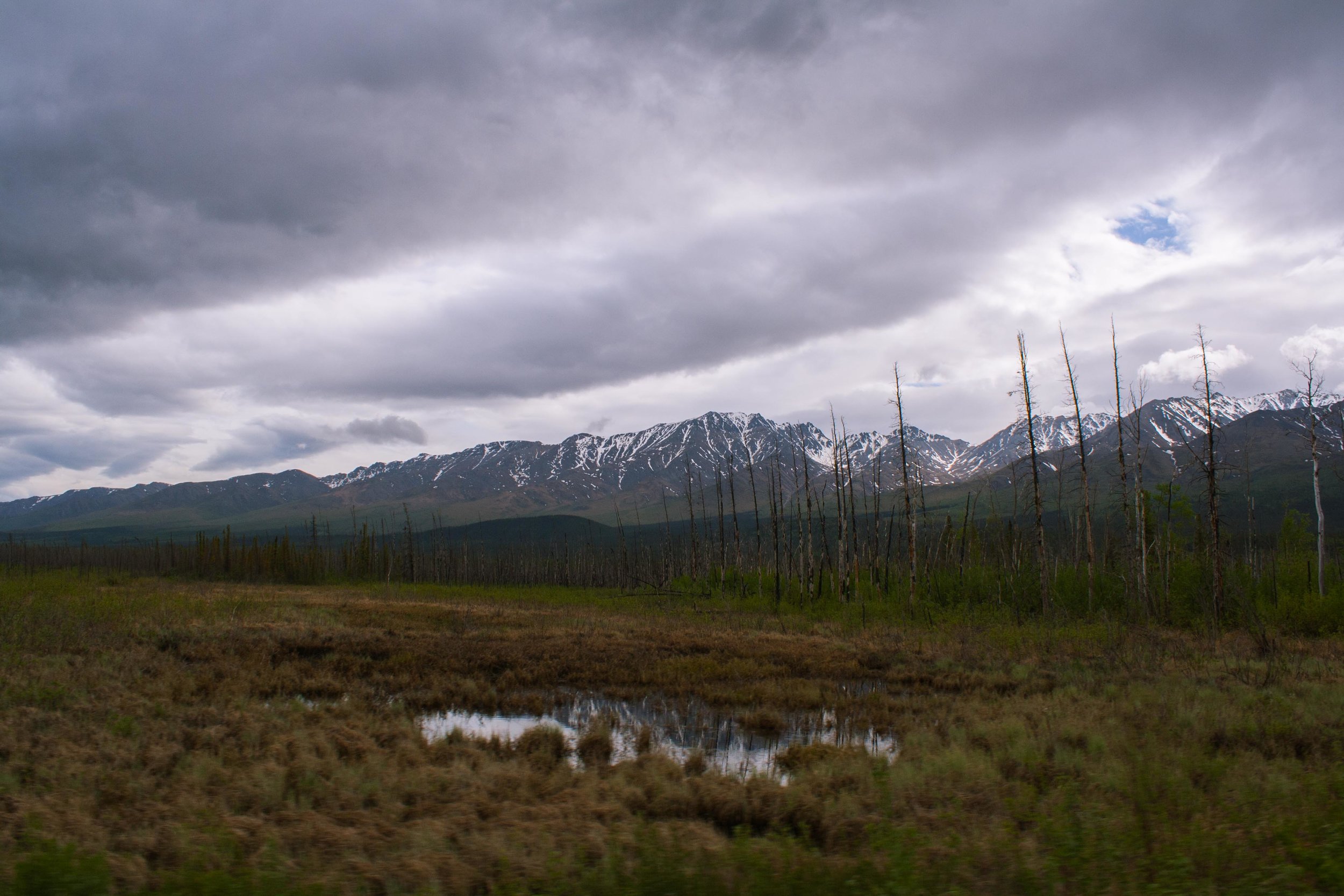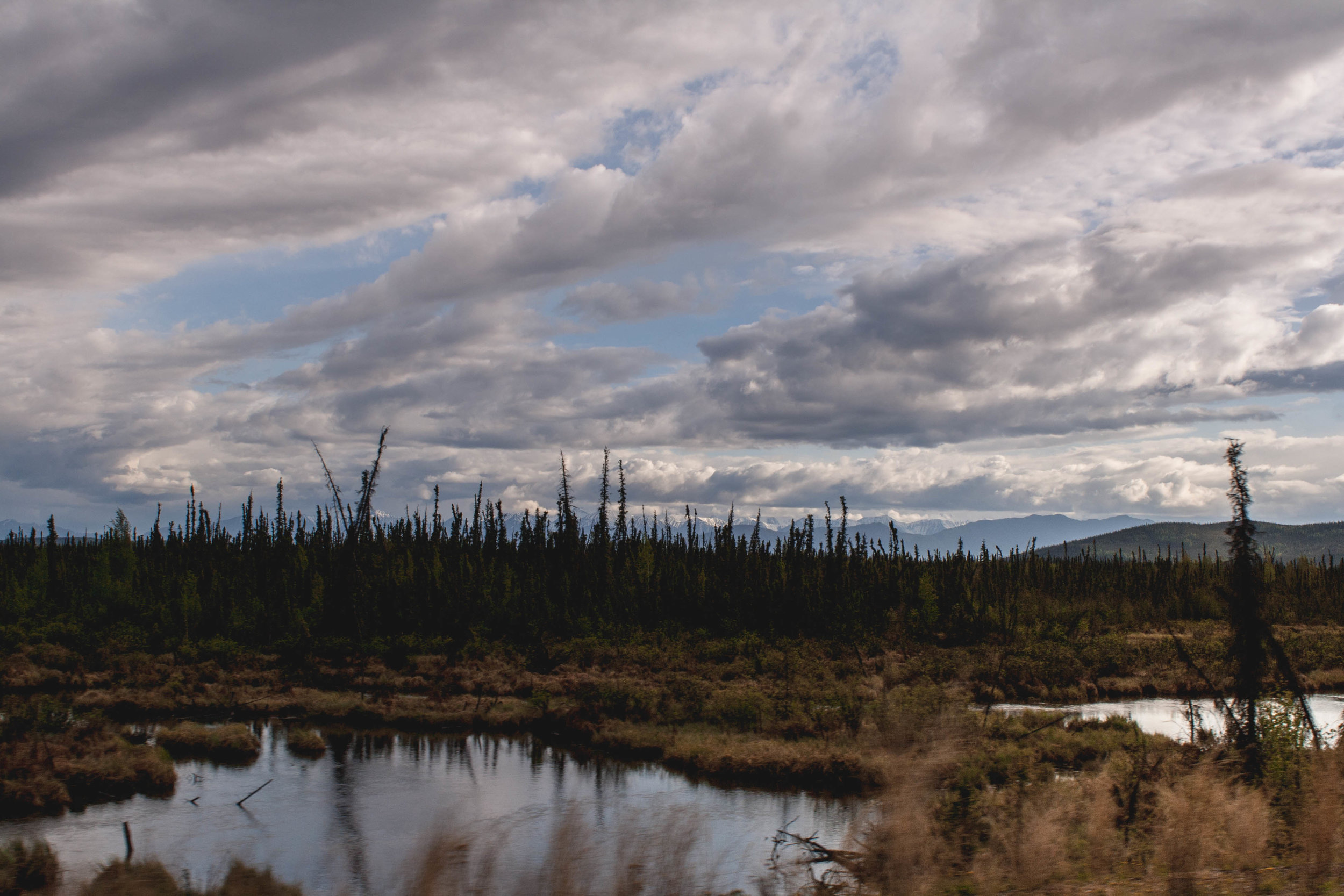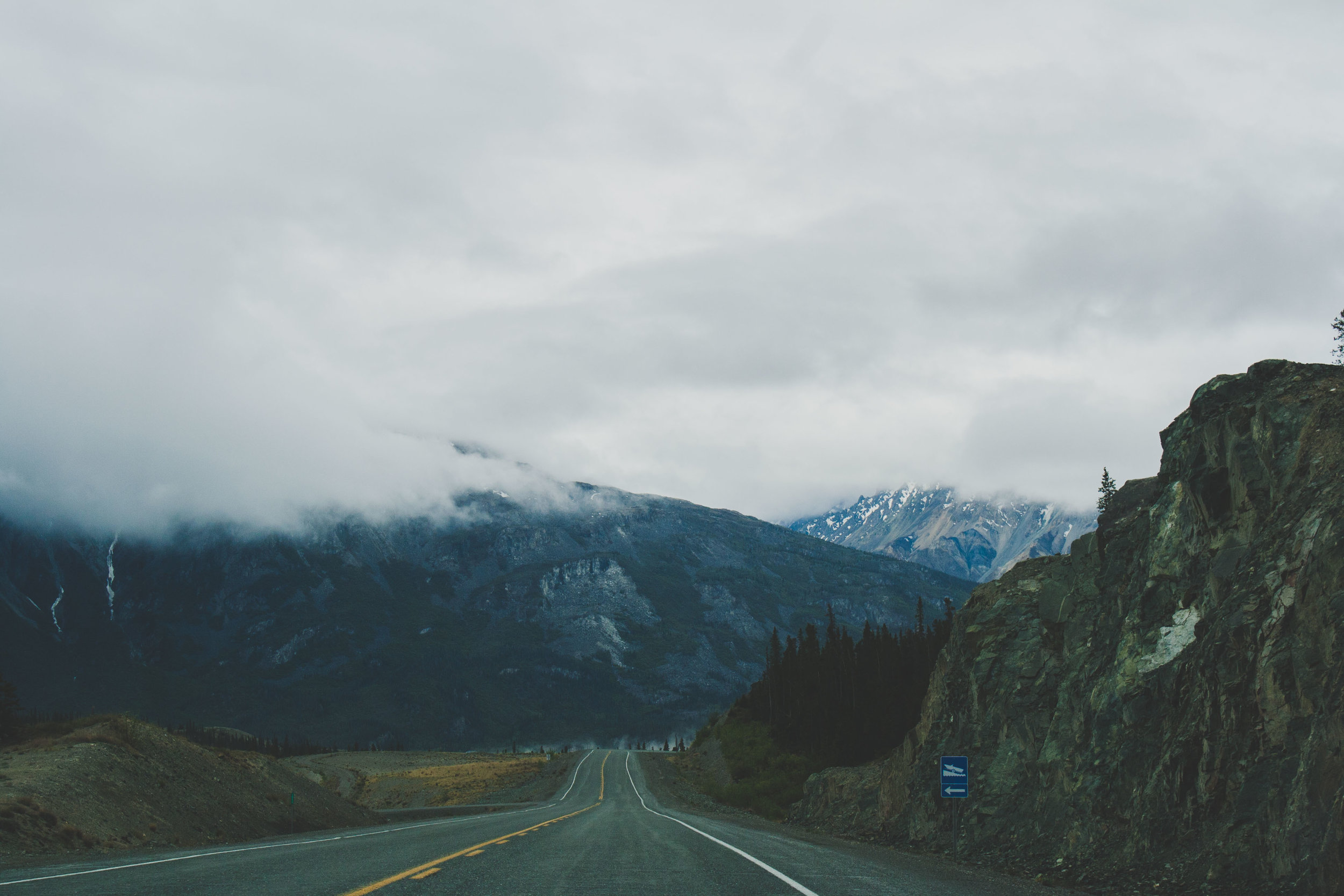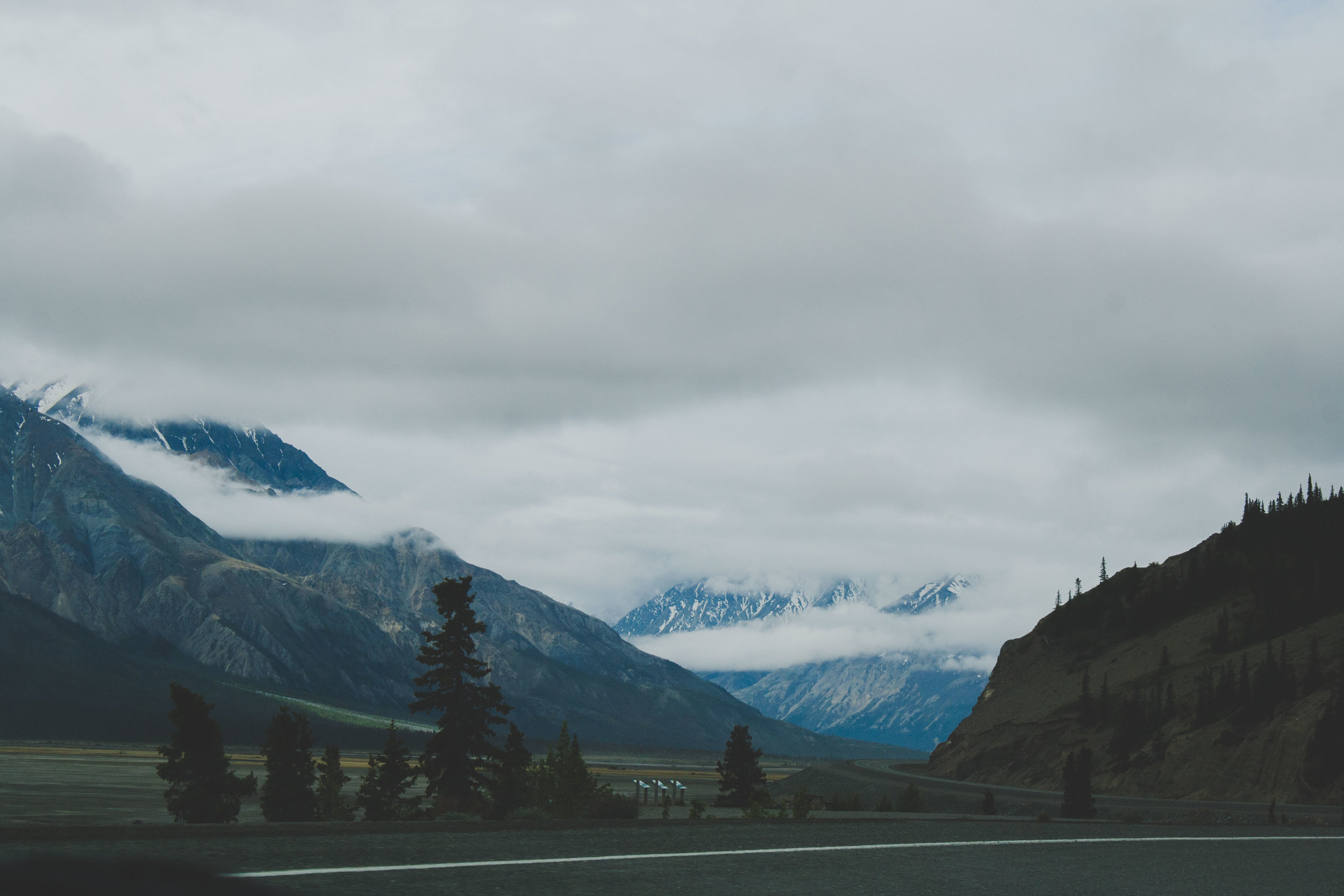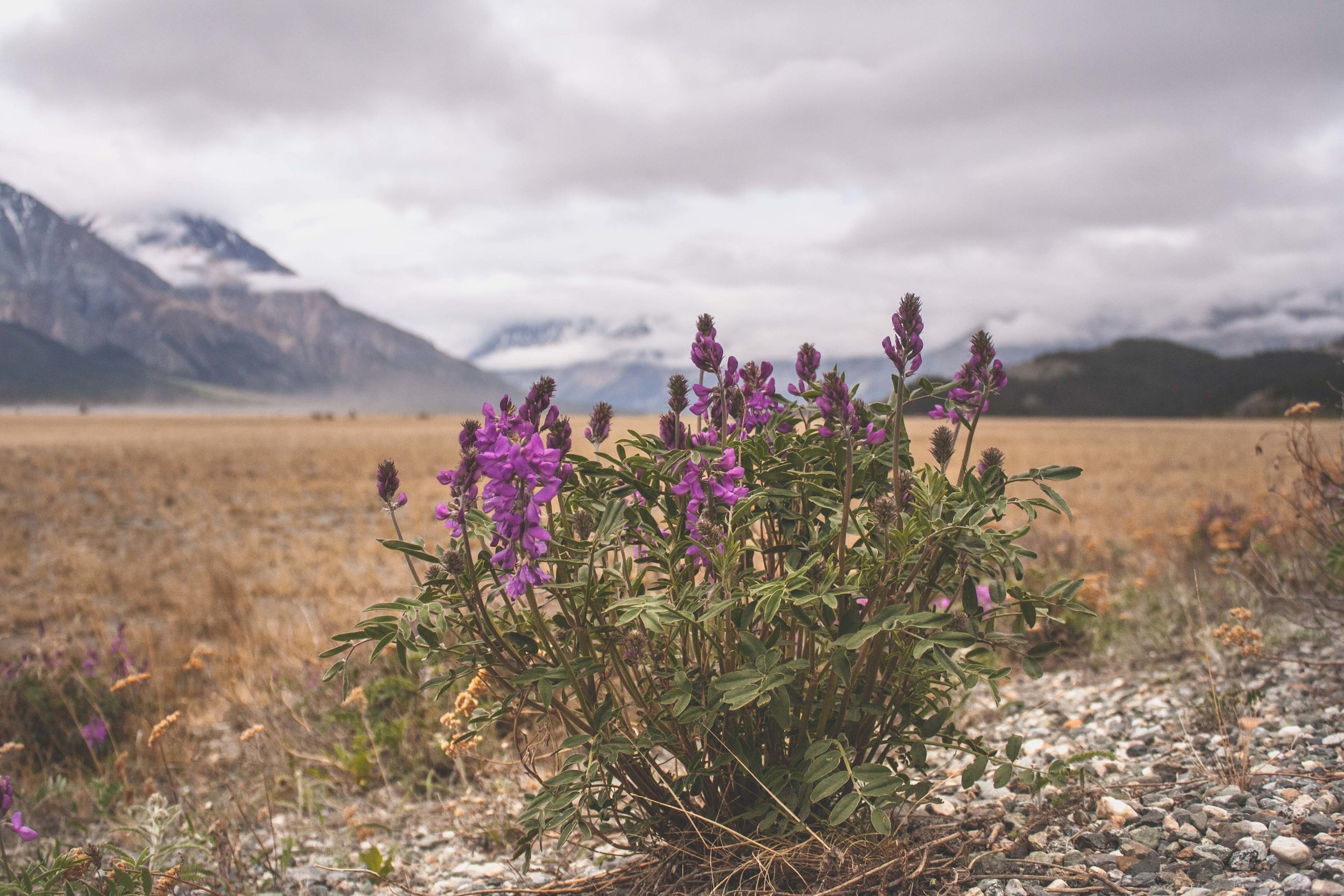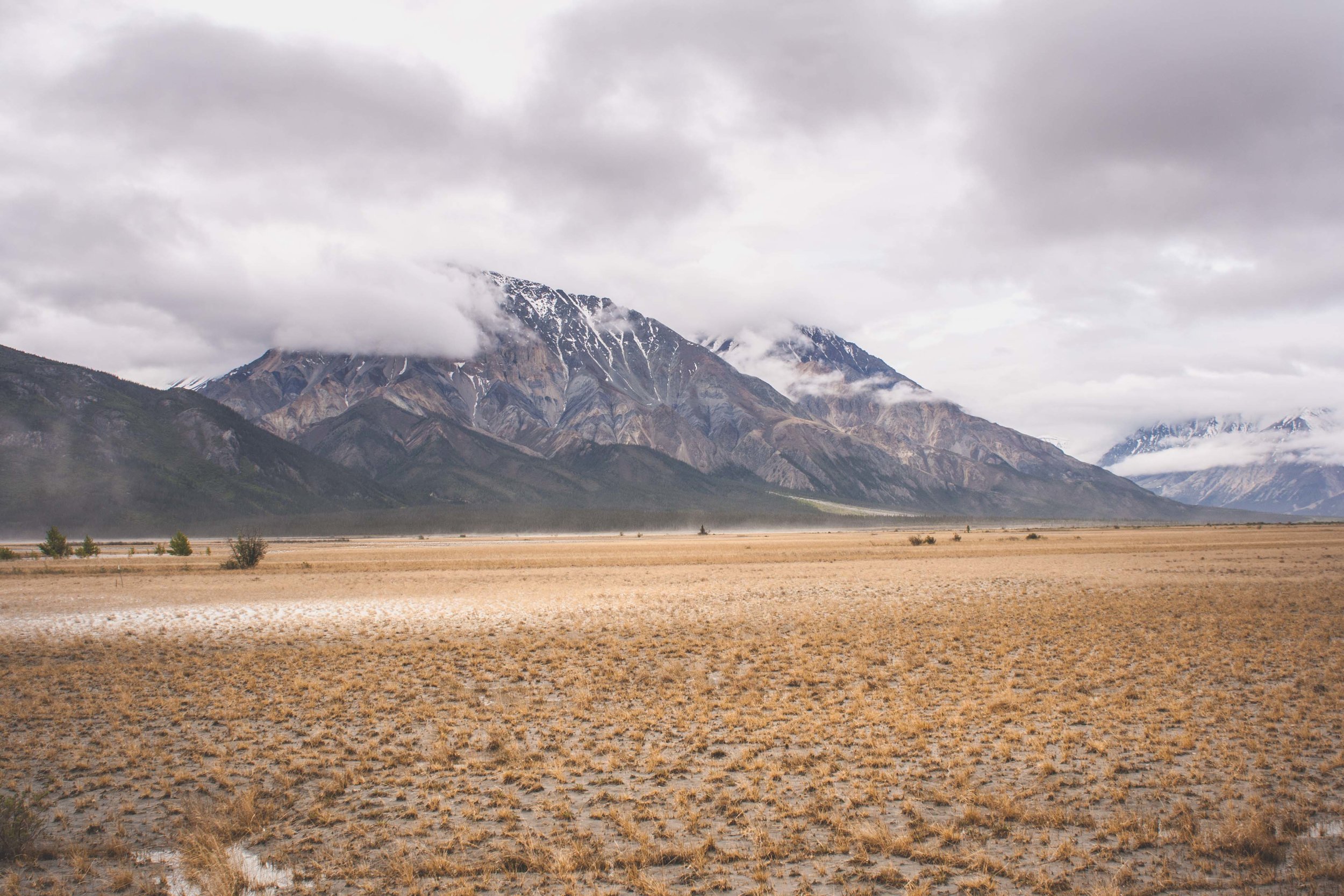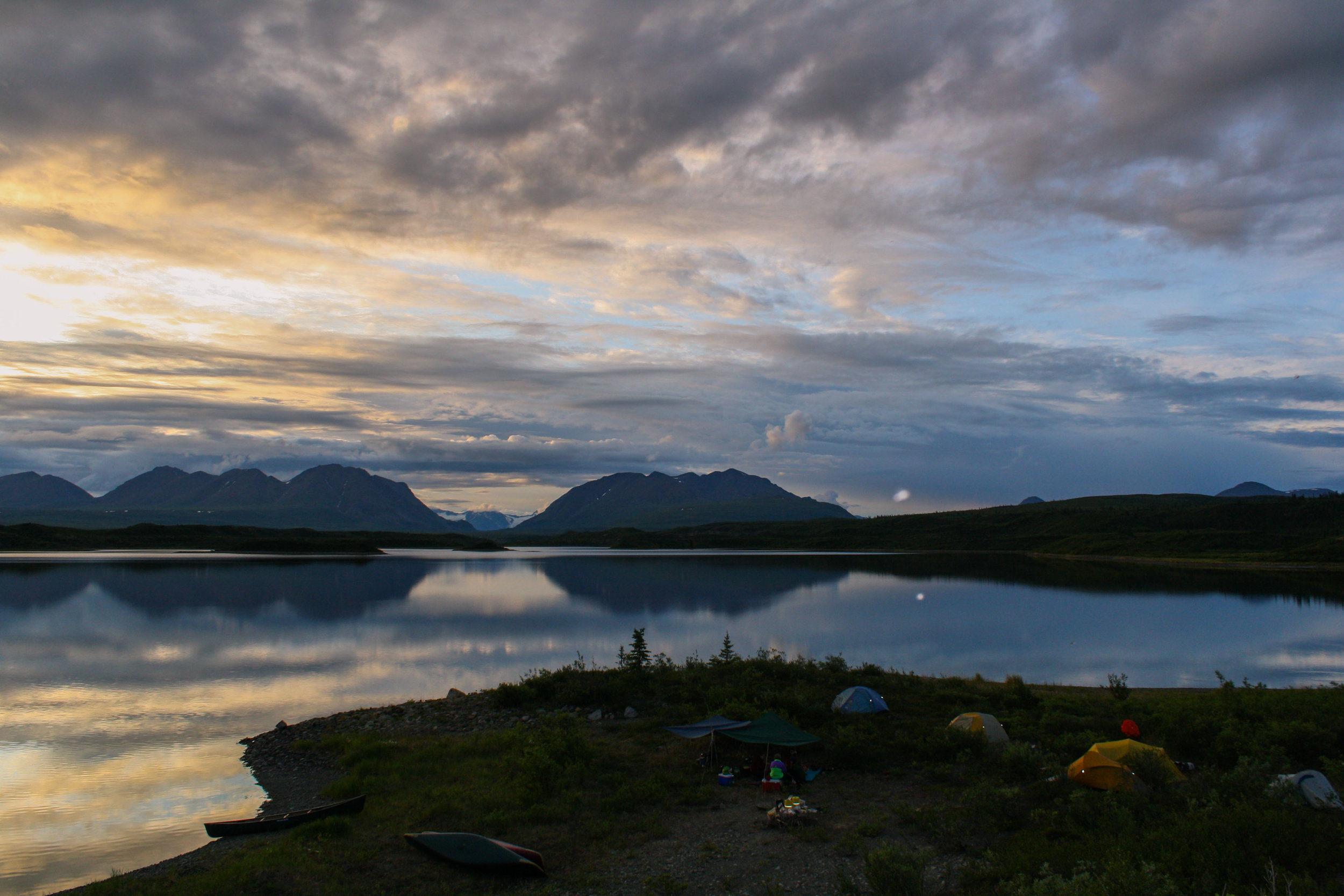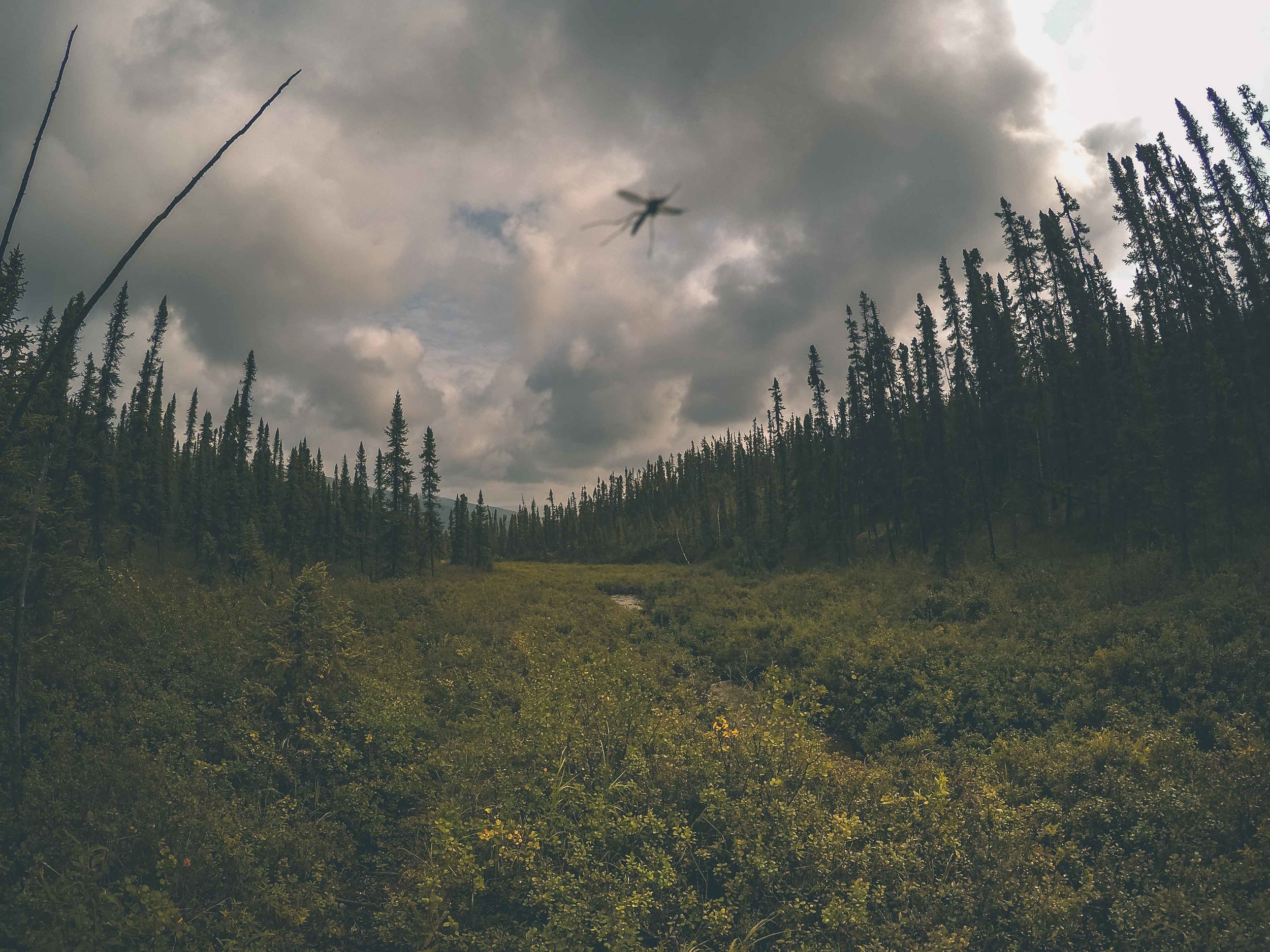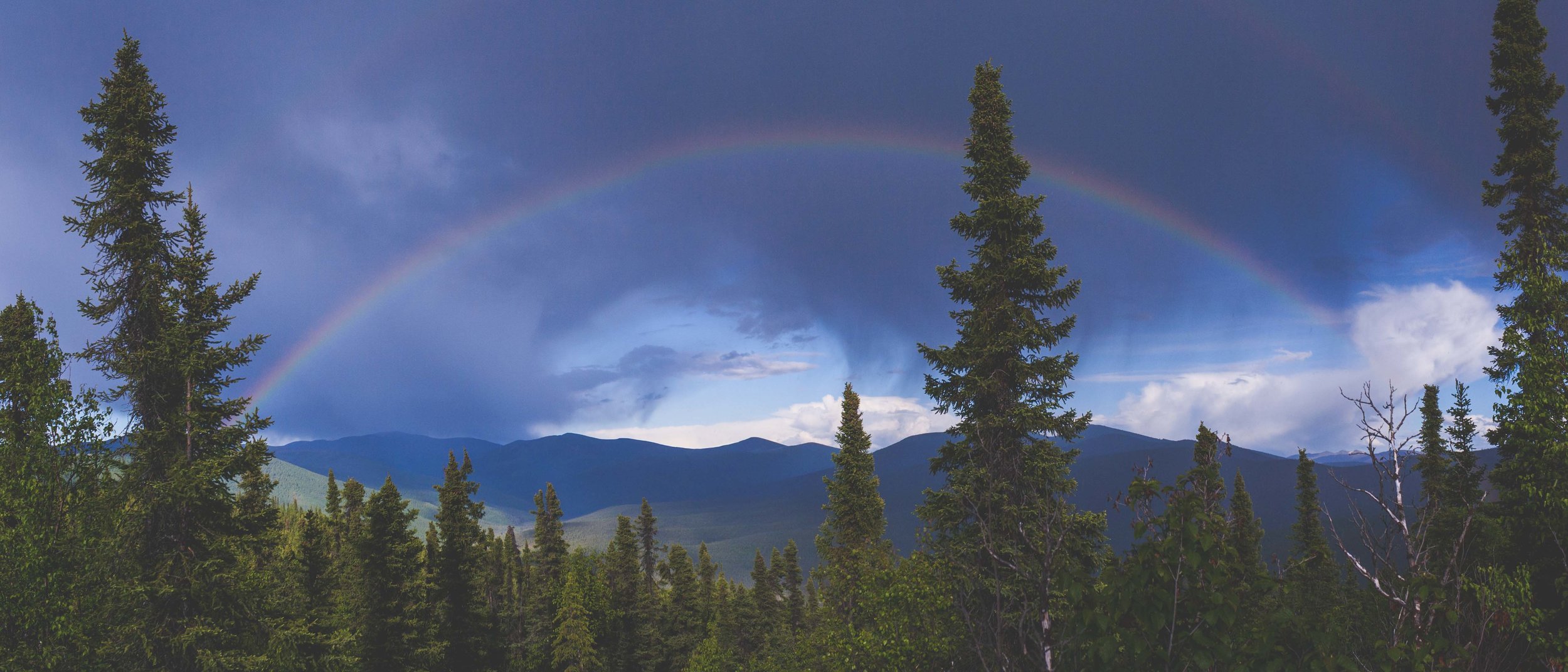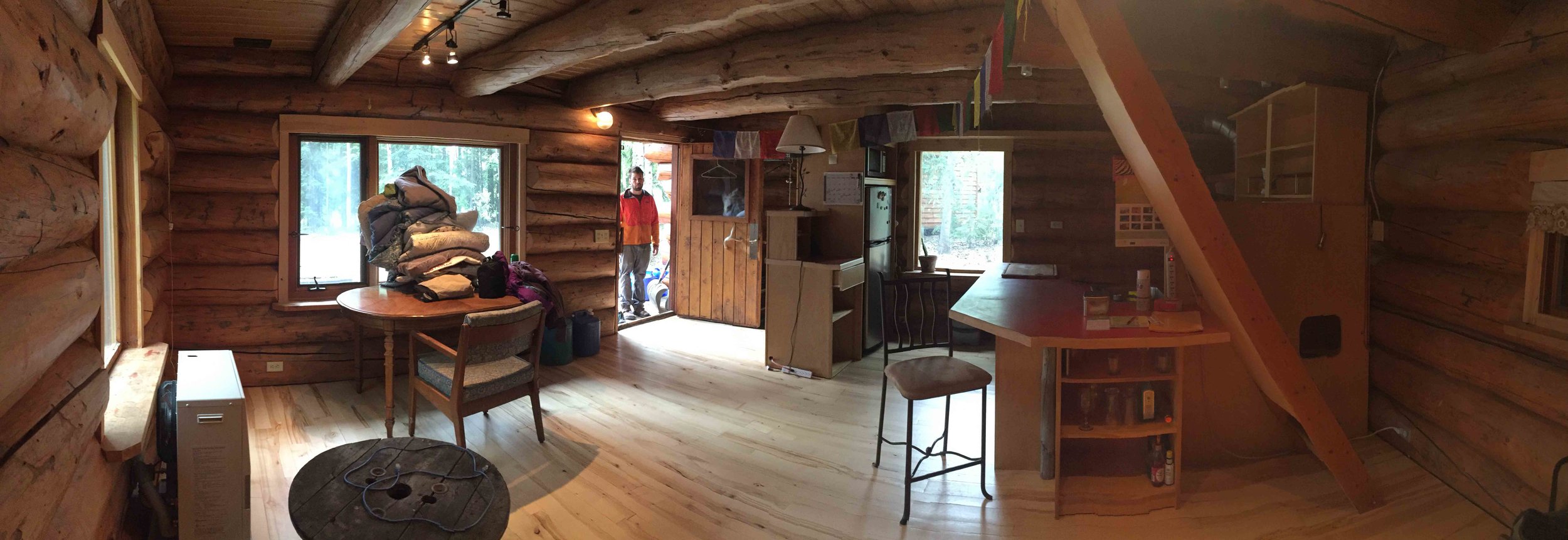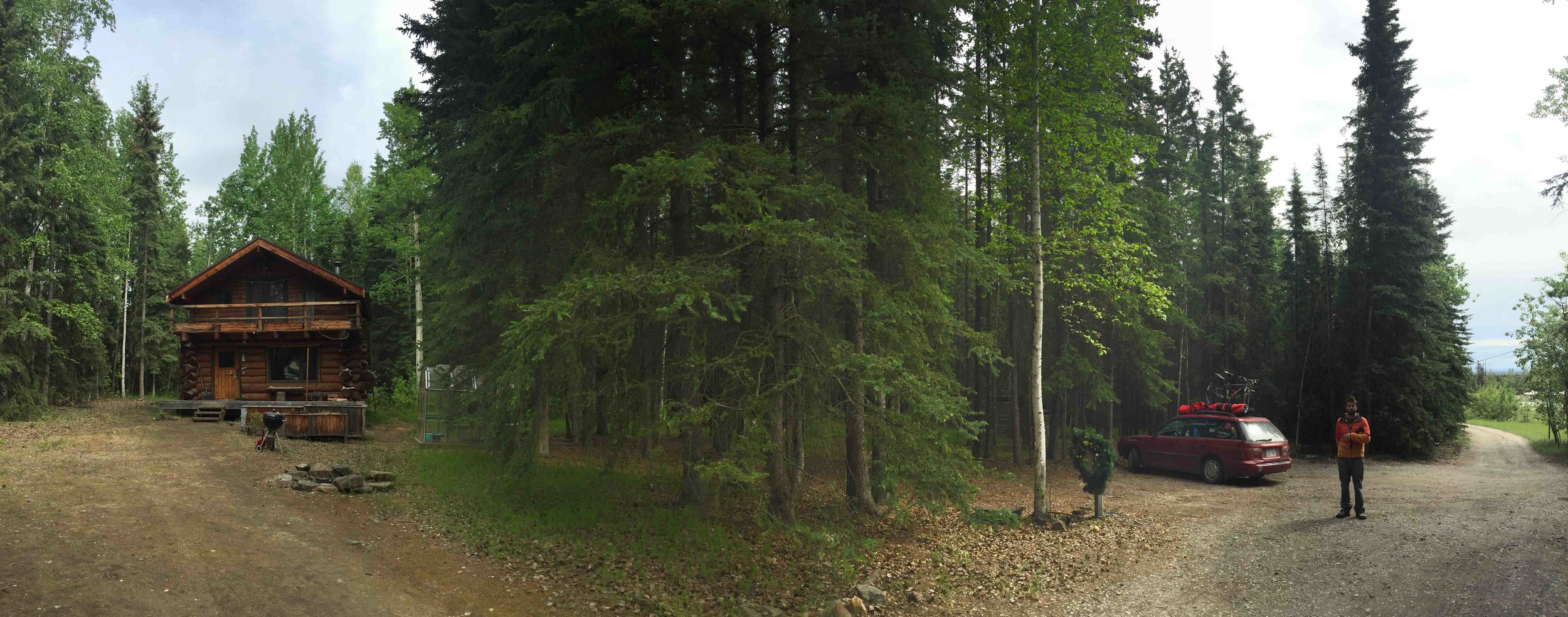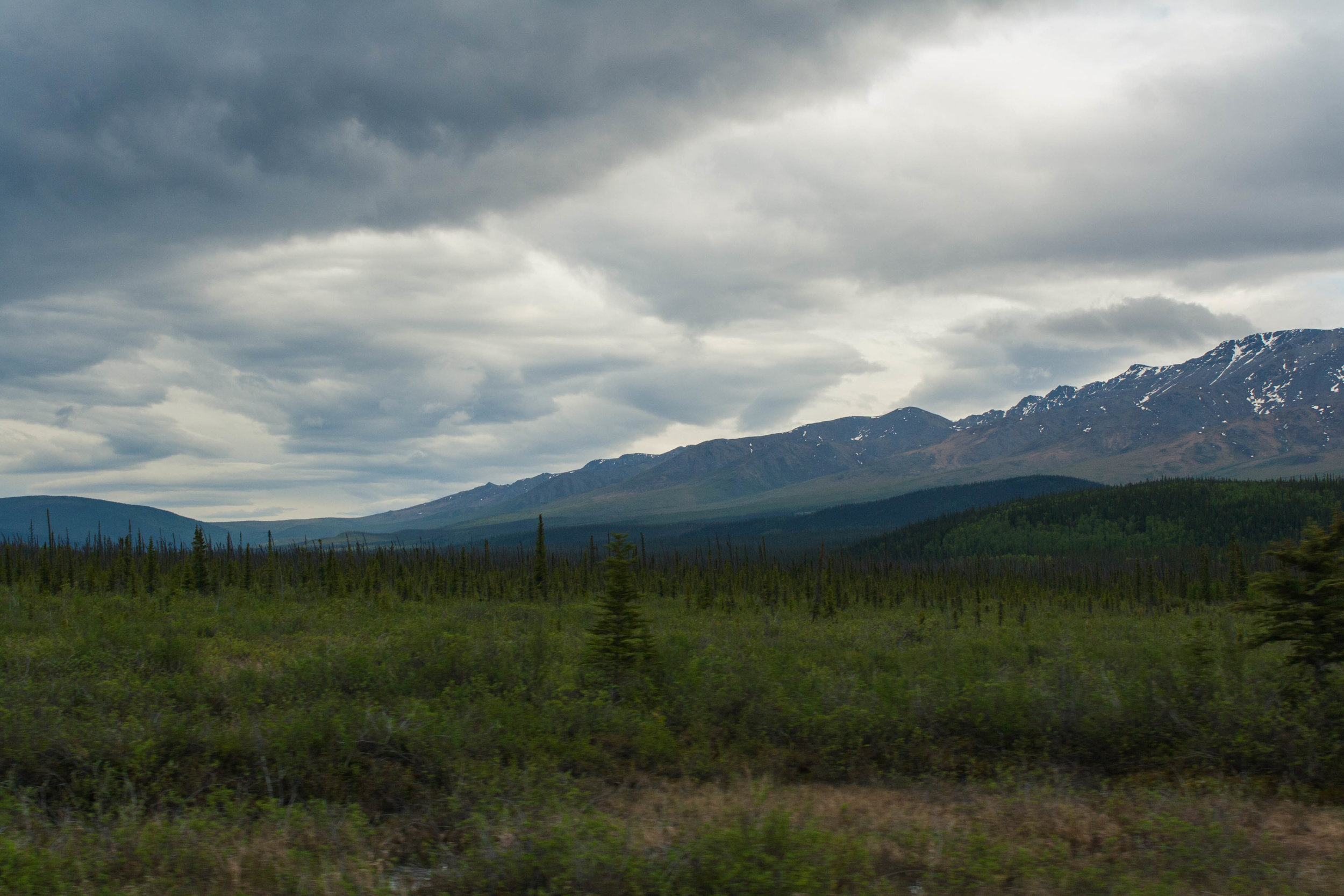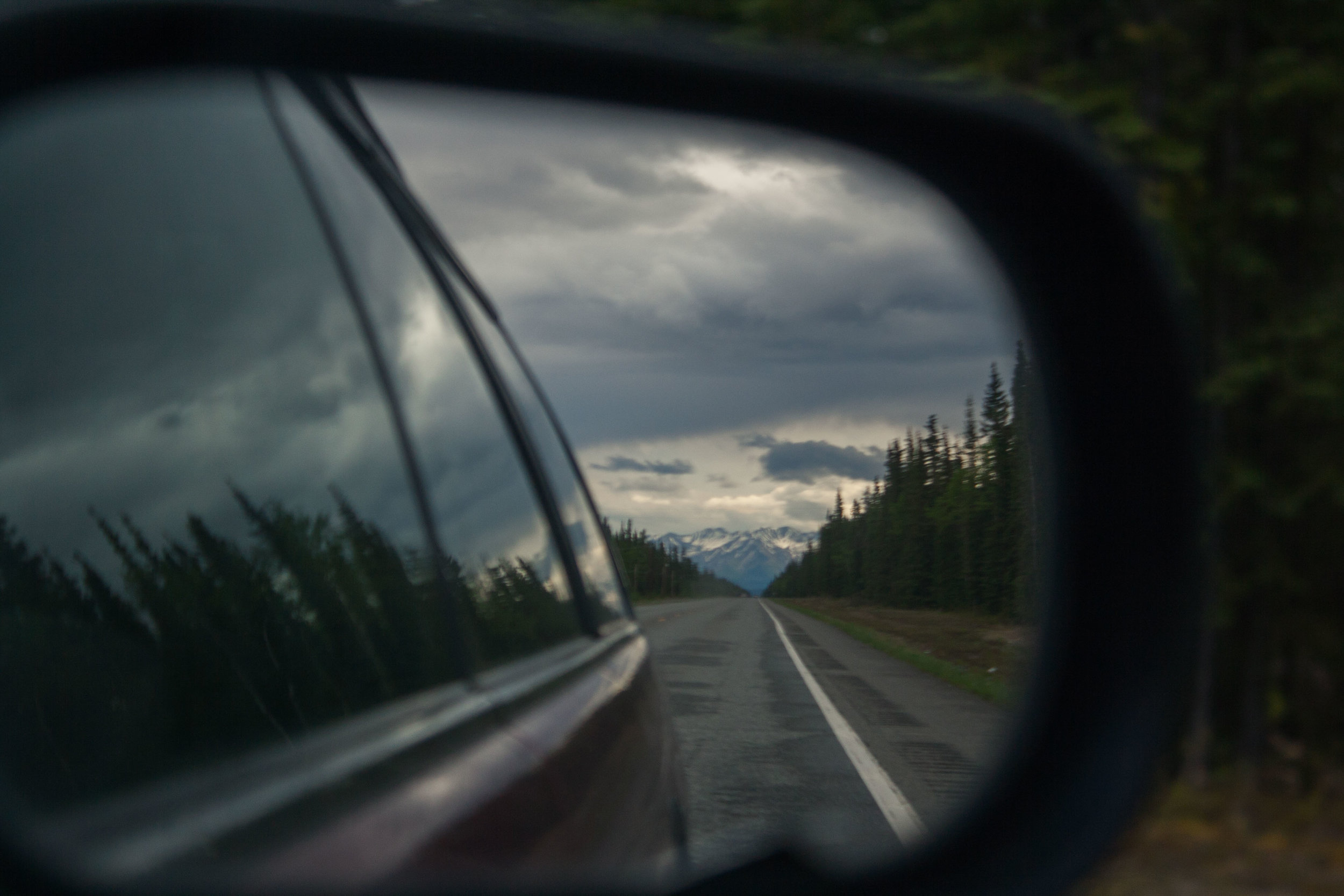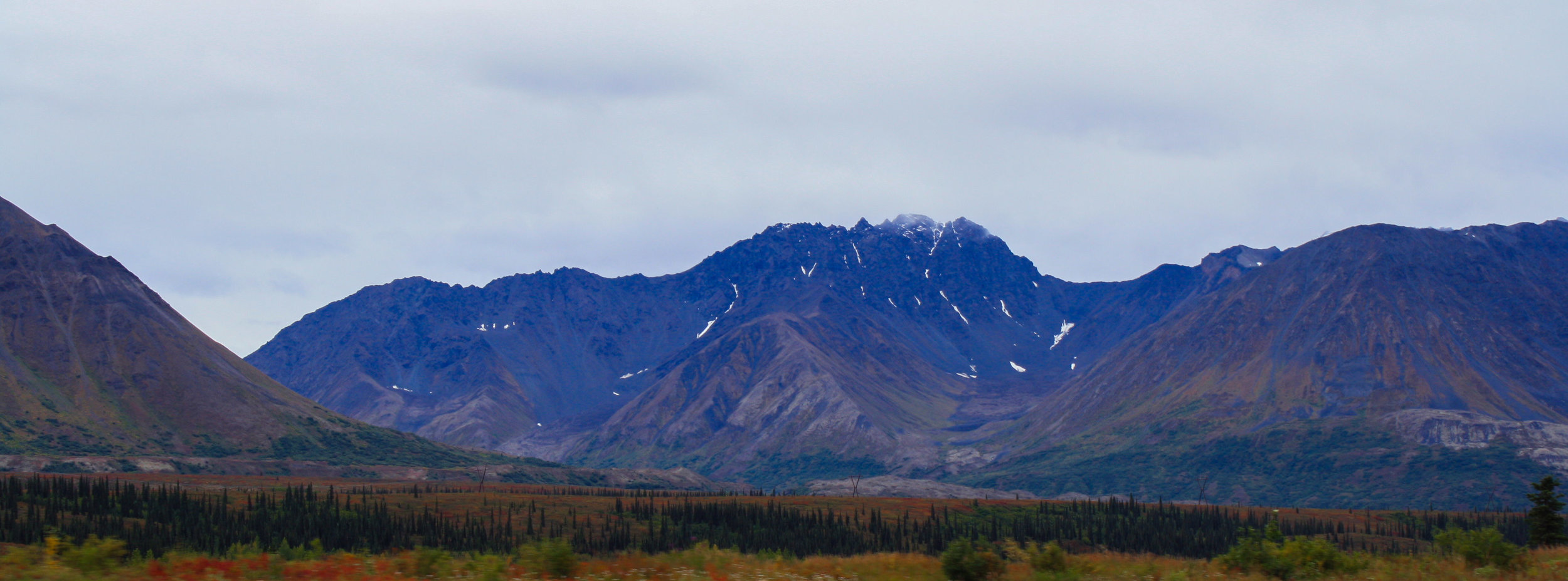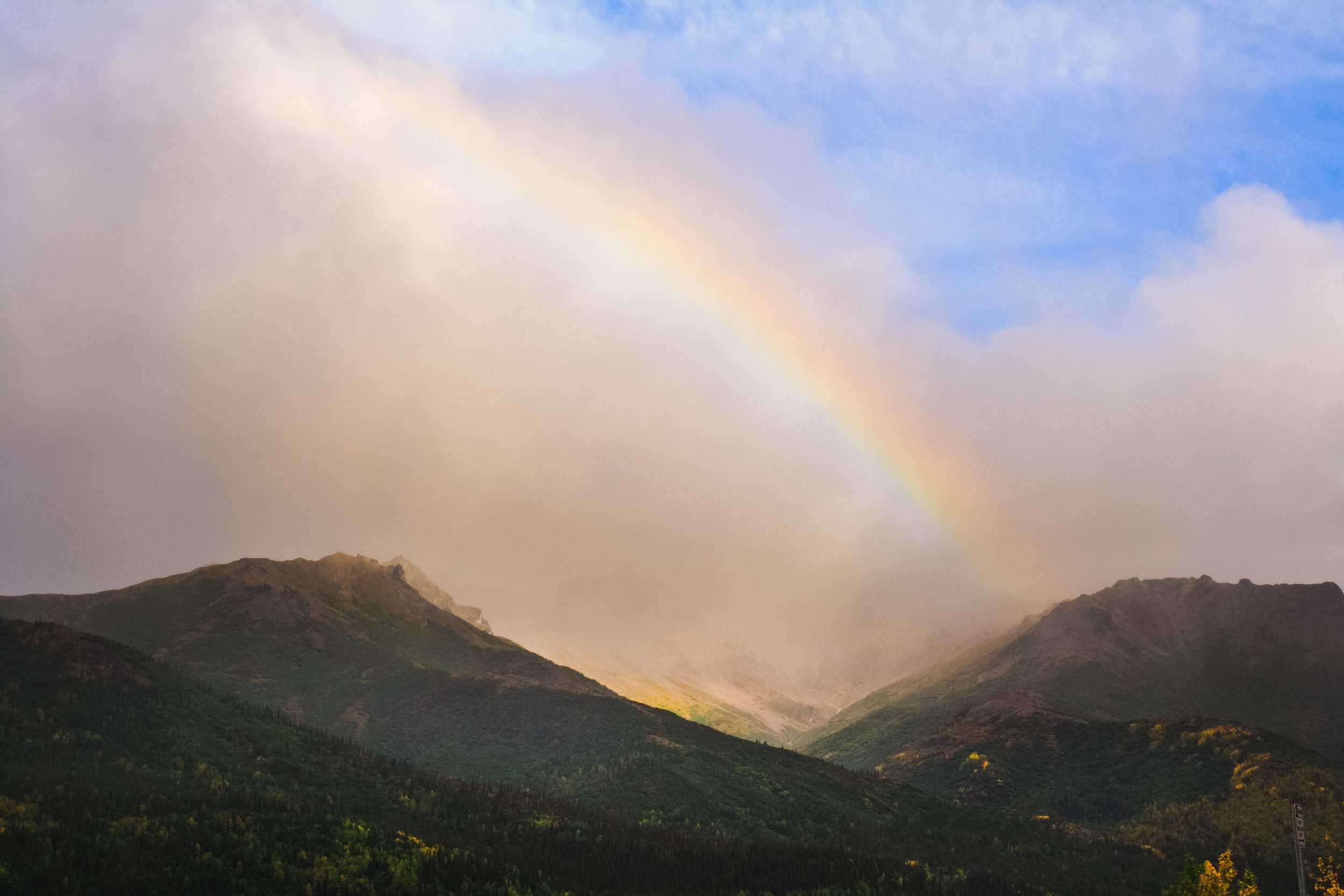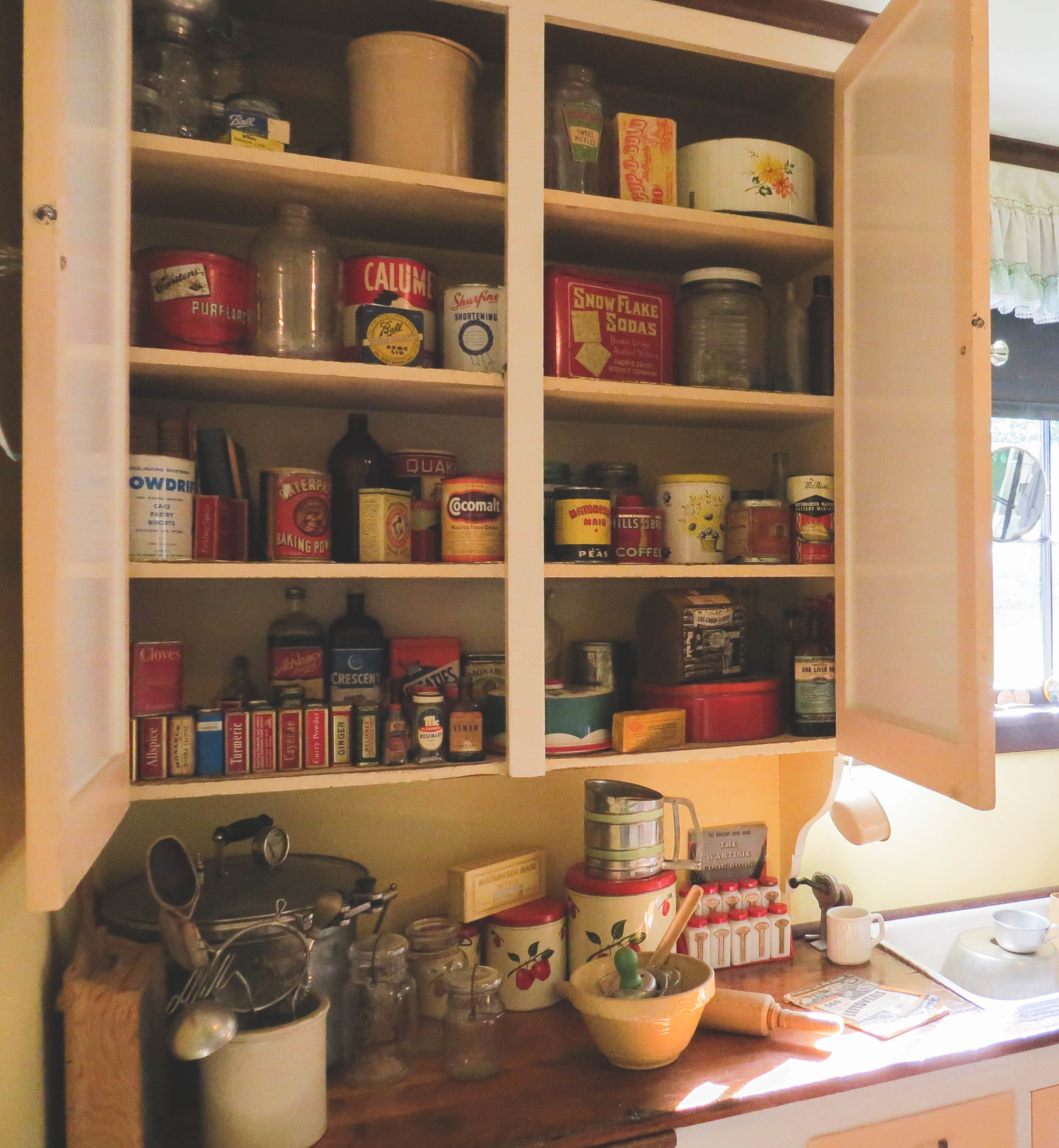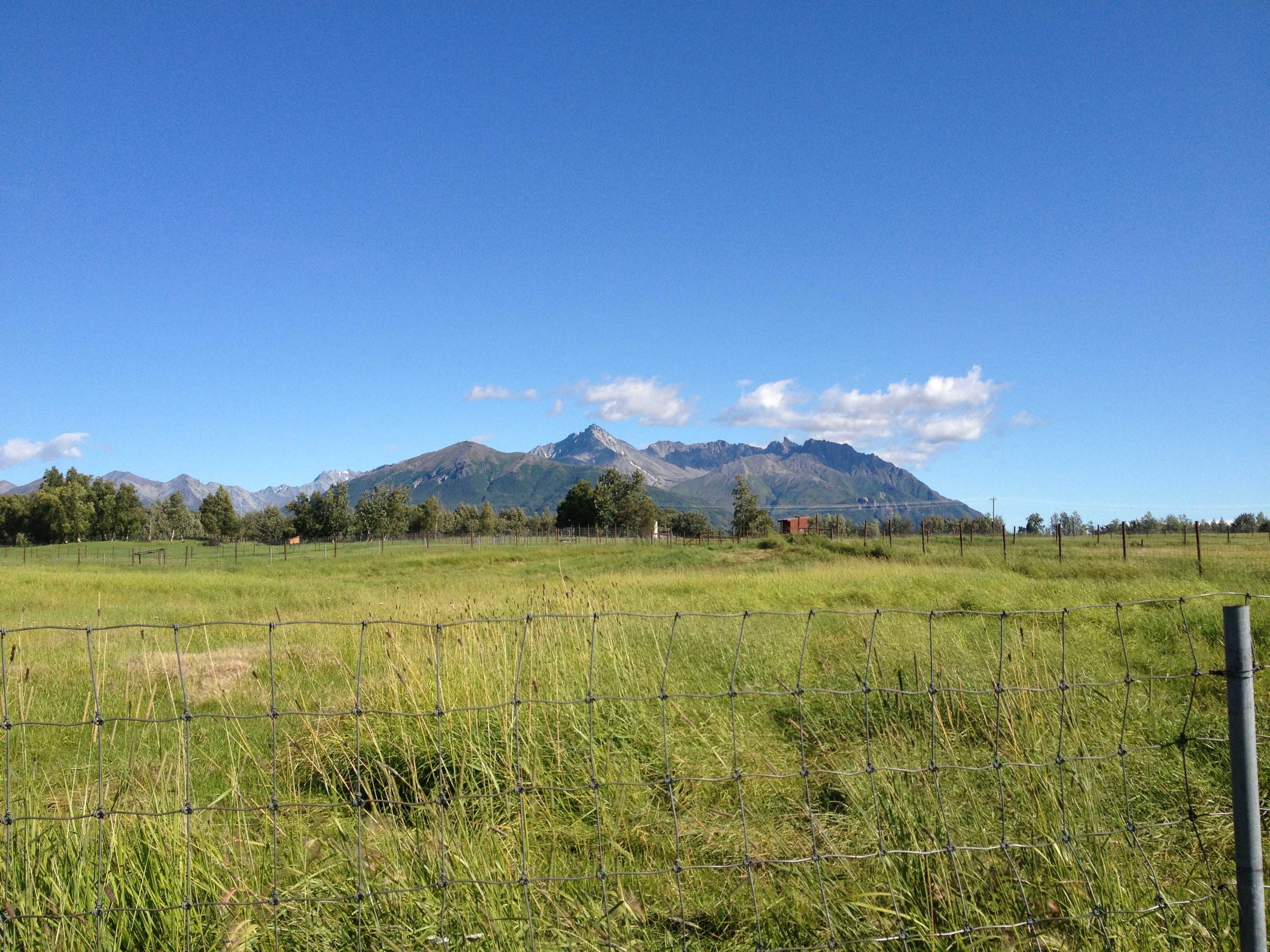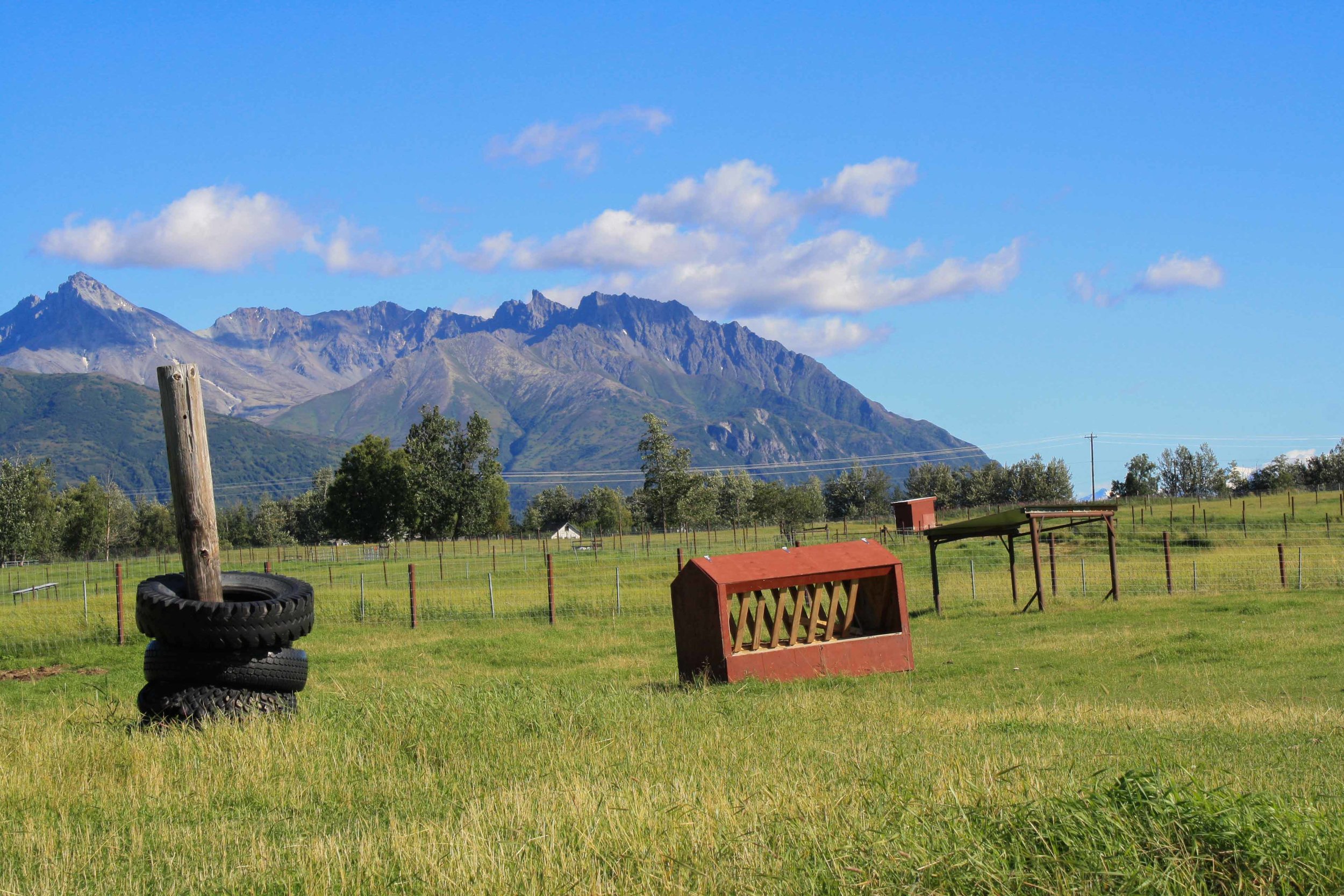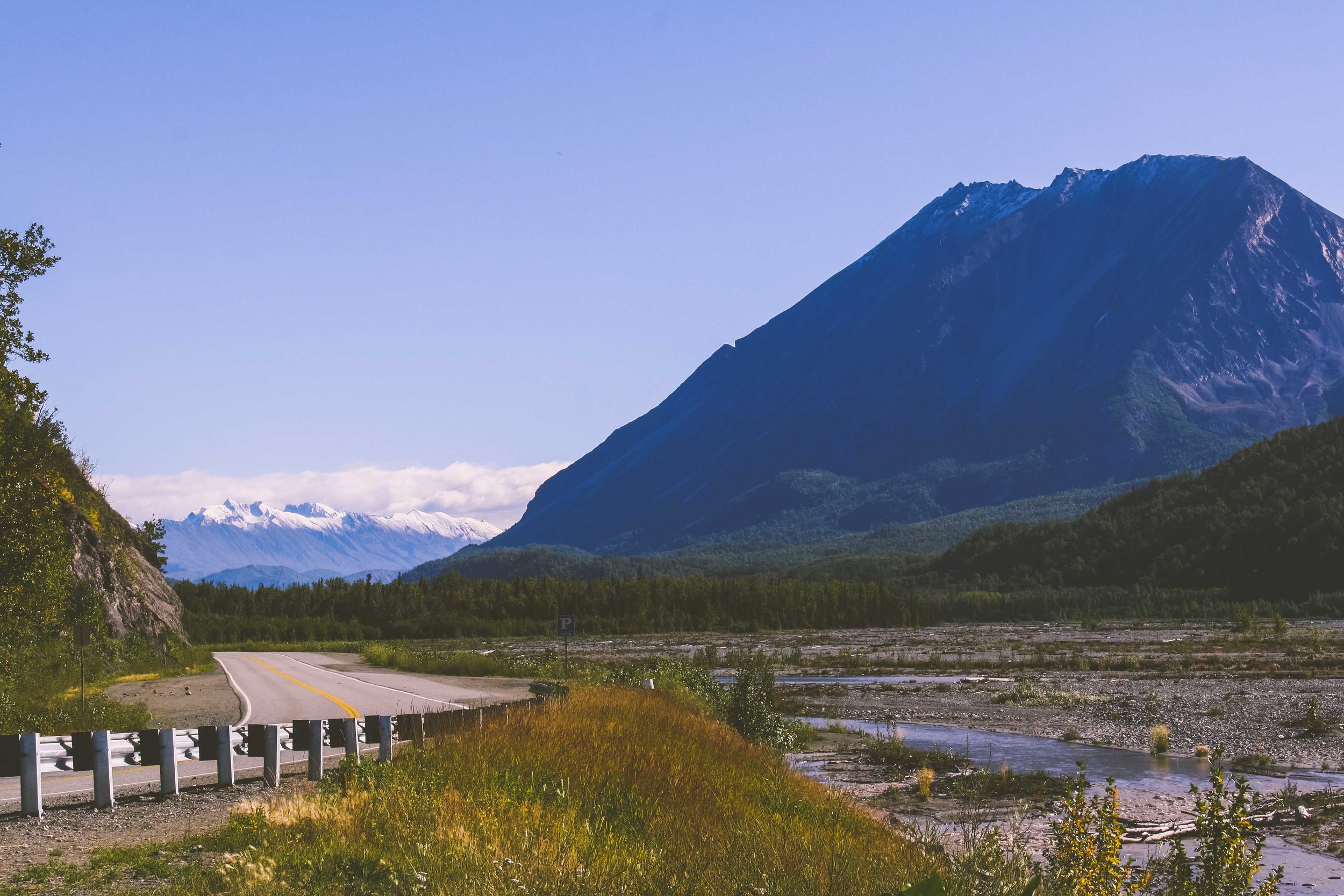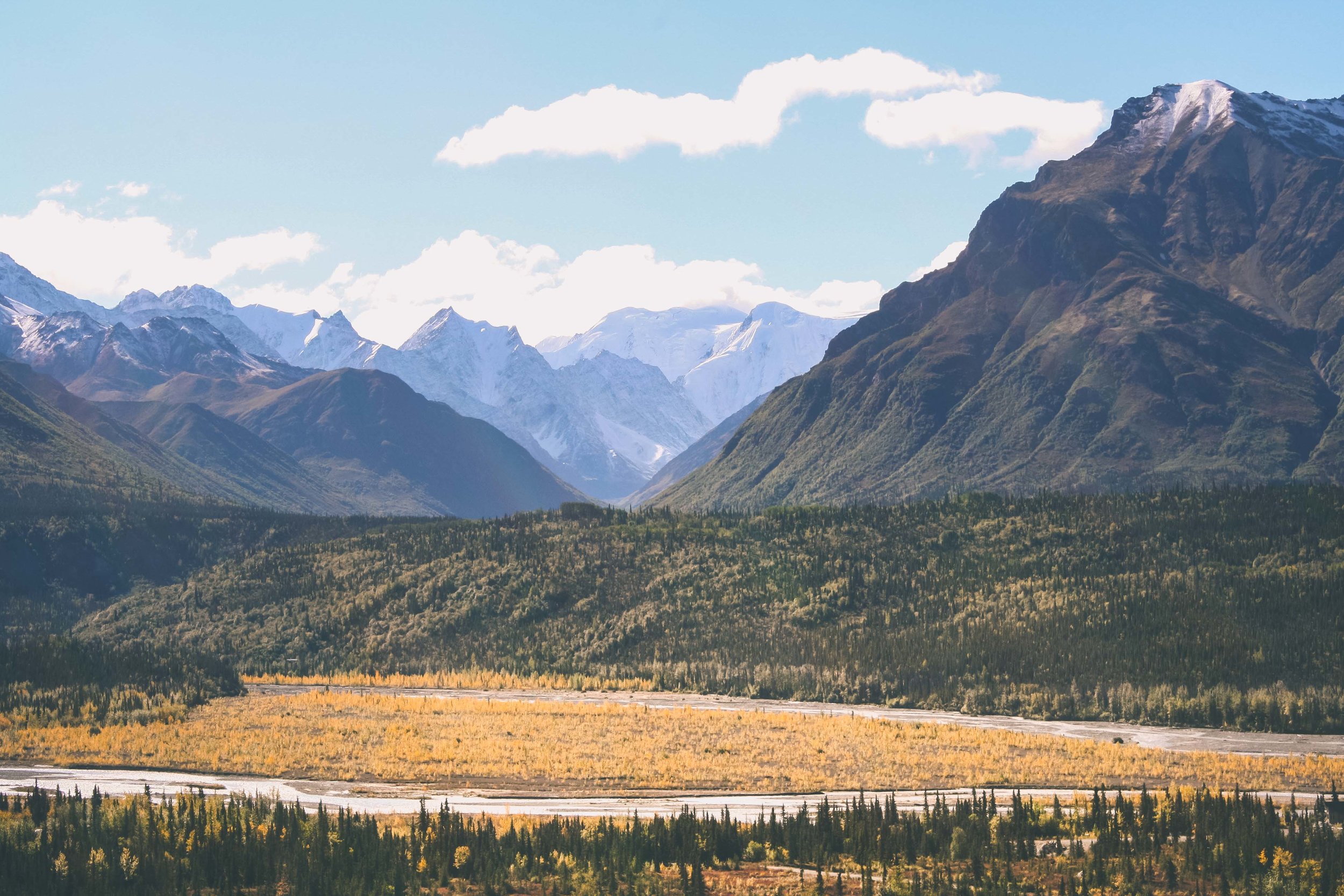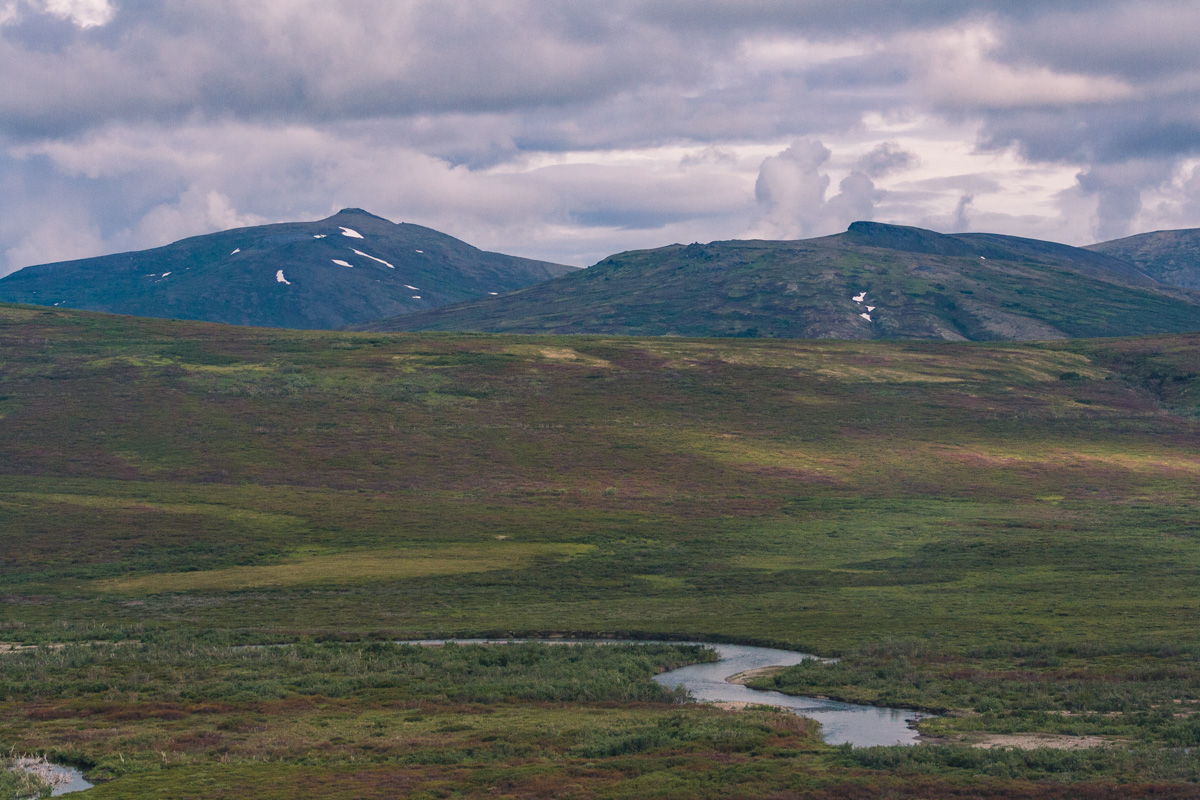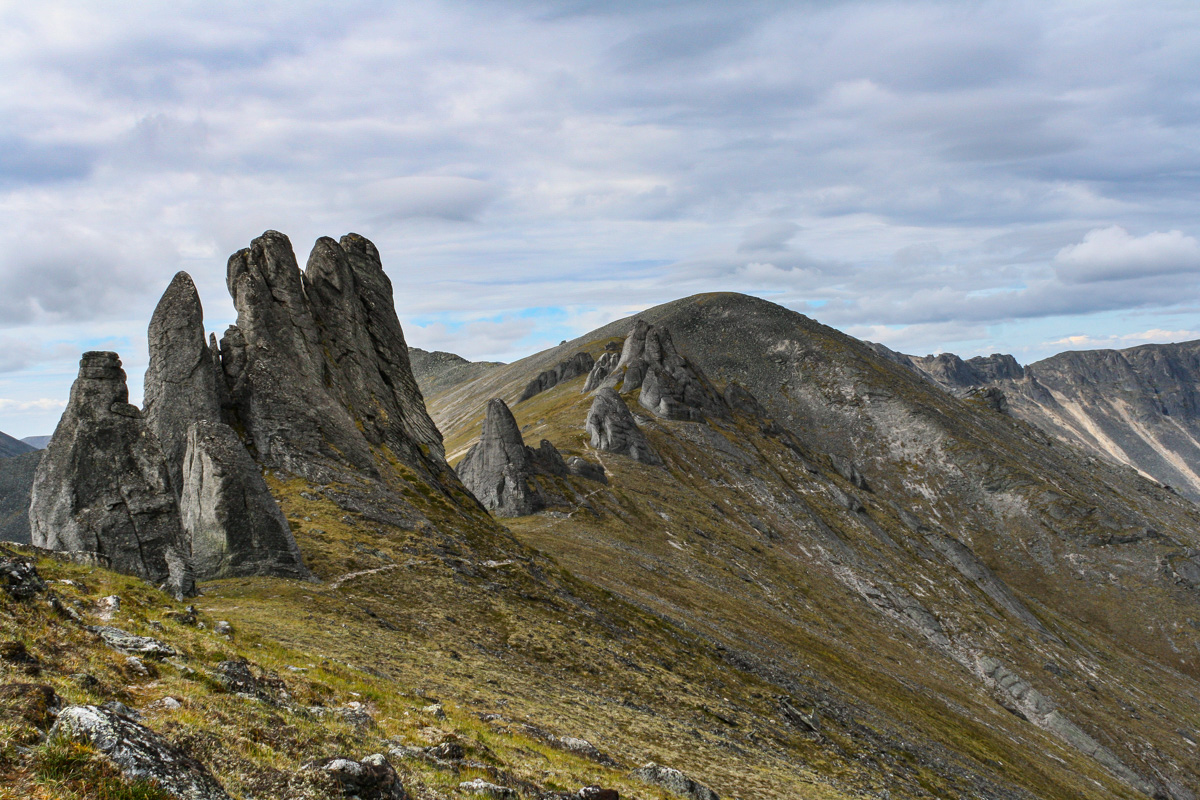Flashback Friday
DAY 1, 05/21/16: Fairbanks to Lake Creek Campground - 369 miles
Day 1 on our road trip we drove east, towards Delta Junction, Tok, and eventually into Canada. Fairbanks is an epicenter of the Boreal Forest. Deep forest consisting of mostly the fire-prone Black Spruce, but also the abundant White Spruce, Birch, Alder, and other deciduous tree species. As you drive east on the Richardson highway, you also drive along the Tanana River. It always makes me think about Paul Simons song "Diamonds on the soles of her shoes", in which he sings:
"He's a poor boy
Empty as a pocket
Empty as a pocket with nothing to lose
Sing ta na na
Ta na na na"
After you leave the deep forest behind you, the mountains move in closer, at the same rate as the braided stream comes closer to the road, and you are during many miles driving through the mountains, well if you can see them. Eventually, the mountains move away again, and you are left with more of a boggy wetland landscape with dead standing spruce and large mountains in the backdrop.
Crossing into Canada
About 6:30 in the evening we got closer to the Canadian border, and eventually our campsite. With the midnight sun above us we didn't see any sign of a late evening. The border crossing into Canada was smooth, they asked about our trip and where we were headed. Then the rhetorical question about fruit and alcohol, oh, and weapons. The only thing we could potentially classify as a weapon was the bear spray. The border crossing agent welcomed us and we continued into one of the most remote areas of our trip, the Yukon Territory (YT). The Yukon Territory has a very low population, only 36,000 people live here, in an area that is almost 3.5 times the size of New York State, which makes their slogan "larger than life" even more fitting.
White River Lake Creek Campground
Once you get into Canada and the Yukon we are back into deep forest and mountains for real. Mountains everywhere, just like Alaska. We finally arrived at a completely empty campground later that evening. It seems as everyone had disappeared after the border crossing. We got the tent up, had dinner and then went for a short walk along the river. Later that evening rain that had been following us all day picked up and we fell asleep with the rain pounding on the tent.
Day 1 trip Details - Gas, Camping, and gas mileage
US: Jacks service Delta Junction, AK, 99.5 miles. Gas mileage: 23.6 miles/gallon
US: youngs chevron milepost 1314 Alaska highway, AK, 109.2 Miles. Gas mileage: 26.25 miles/gallon
Canada: Fas gas beaver creek 1202 Alaska highway YT, 110.7 Miles. Gas mileage: 25.33 miles/gallon
Total about 319.4 miles + 49.6 miles from gas station to campground
Campground: Lake Creek Campground
DAY 2 05/22/16: Lake Creek Campground to Wolf Creek Campground, 241 miles
The next morning we woke up early, it was still raining. At many of the campgrounds in Canada, they provided free firewood, unheard of in the US. Priority number one: coffee, priority number two: get a fire started, so we could get warm, and also try to dry our tent out before continuing. There is nothing worse than a wet tent.
Summer is the season, for roadwork
We continued through Canada, the Yukon, and the deep forests, mountains, and abundance of water. Never in my life had I expected Canada to be such an eye-opener. Here I had lived in Alaska for about 7 years and thought that nothing will ever top this. Well, I was of course wrong. With the northern region of North America being underlain by permafrost and the harsh winters, summertime not only means tourist season but also roadwork season. It is not uncommon to have to wait half an hour for a pilot car to guide you through the roadworks.
Hey Bear
About 8:30 AM we spot a car standing still by the side of the road. As we approached we could see the reason why. A grizzly, not only any grizzly, a mama grizzly with two bear cubs. Two bear cubs that can't have been more than a few days old. They even had issues with their coordination, and it was pure joy seeing them play with each other and loose their balance from time to time. Mama bear was of course patiently watching nearby.
Mountains
The mountains disappeared and appeared as we continued driving through Canada. It's hard to fathom how large Canada is, if you thought Alaska with its wilderness was big, that is nothing compared to Candaland. When you think it can not get any more incredible it can, and it will. Again, and again, and again. We stopped at a rest stop by the Kluane River. Oh my, what a treat for the eyes. Those mountains are just right there, in front of you, and sometimes it gets hard to understand how mighty they actually are.
Wolf Creek Campground
We finally arrived at Wolf Creek Campground, after about 241 miles of driving. In comparison to the previous campground, this one was a bit more crowded, as in there were other people than us there. Of course it was still raining. I had been dealing with an early rainy field season, but also rain, rain and rain the past couple of years in the field so I guess I had been hardened a bit. W had not. When the rain finally stopped we put our tent up and tried to dry our sleeping bags that had gotten damp earlier. We even had a fire before going to bed after another late dinner.
Day 2 trip Details - Gas, Camping, and gas mileage
Canada: Petro express Haines Junction, YT 135.9 miles from Lake Creek campground. Gas mileage 31.66 miles/gallon
Total driving on day 2, about 135.9 + 105 miles from the gas station to campground (240.9 miles).
The grand total of the whole trip: 609.9 miles
Campground: Wolf Creek Campground




